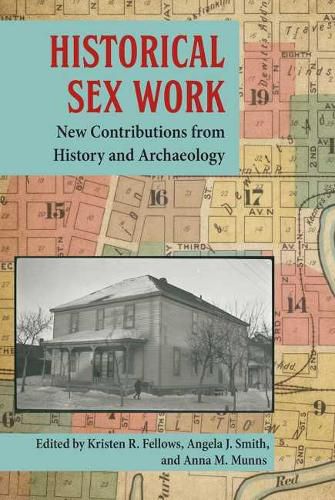Readings Newsletter
Become a Readings Member to make your shopping experience even easier.
Sign in or sign up for free!
You’re not far away from qualifying for FREE standard shipping within Australia
You’ve qualified for FREE standard shipping within Australia
The cart is loading…






This title is printed to order. This book may have been self-published. If so, we cannot guarantee the quality of the content. In the main most books will have gone through the editing process however some may not. We therefore suggest that you be aware of this before ordering this book. If in doubt check either the author or publisher’s details as we are unable to accept any returns unless they are faulty. Please contact us if you have any questions.
This volume explores the sex trade in America from 1850 to 1920 through the perspectives of archaeologists and historians, expanding the geographic and thematic scope of research on the subject. Historical Sex Work builds on the work of previous studies in helping create an inclusive and nuanced view of social relations in United States history.
Many of these essays focus on lesser-known cities and tell the stories of people often excluded from history, including African American madams Ida Dorsey and Melvina Massey and the children of prostitutes. Contributors discuss how sex workers navigated spatial and legal landscapes, examining evidence such as the location of Hooker’s Division in Washington, D.C., and court records of prostitution-related crimes in Fargo, North Dakota. Broadening the discussion to include the roles of men in sex work, contributors write about the proprietor Tom Savage, the ways prostitution connected with ideas of masculinity, and alternative reasons men may have visited brothels, such as for treatment of venereal disease and impotence.
Focusing on the benefits of interdisciplinary collaboration and including rarely investigated topics such as race, motherhood, and men, this volume deepens our understanding of the experiences of practitioners and consumers of the sex trade and shows how intersectionality affected the agency of many involved in the nation’s historical vice districts.
$9.00 standard shipping within Australia
FREE standard shipping within Australia for orders over $100.00
Express & International shipping calculated at checkout
This title is printed to order. This book may have been self-published. If so, we cannot guarantee the quality of the content. In the main most books will have gone through the editing process however some may not. We therefore suggest that you be aware of this before ordering this book. If in doubt check either the author or publisher’s details as we are unable to accept any returns unless they are faulty. Please contact us if you have any questions.
This volume explores the sex trade in America from 1850 to 1920 through the perspectives of archaeologists and historians, expanding the geographic and thematic scope of research on the subject. Historical Sex Work builds on the work of previous studies in helping create an inclusive and nuanced view of social relations in United States history.
Many of these essays focus on lesser-known cities and tell the stories of people often excluded from history, including African American madams Ida Dorsey and Melvina Massey and the children of prostitutes. Contributors discuss how sex workers navigated spatial and legal landscapes, examining evidence such as the location of Hooker’s Division in Washington, D.C., and court records of prostitution-related crimes in Fargo, North Dakota. Broadening the discussion to include the roles of men in sex work, contributors write about the proprietor Tom Savage, the ways prostitution connected with ideas of masculinity, and alternative reasons men may have visited brothels, such as for treatment of venereal disease and impotence.
Focusing on the benefits of interdisciplinary collaboration and including rarely investigated topics such as race, motherhood, and men, this volume deepens our understanding of the experiences of practitioners and consumers of the sex trade and shows how intersectionality affected the agency of many involved in the nation’s historical vice districts.